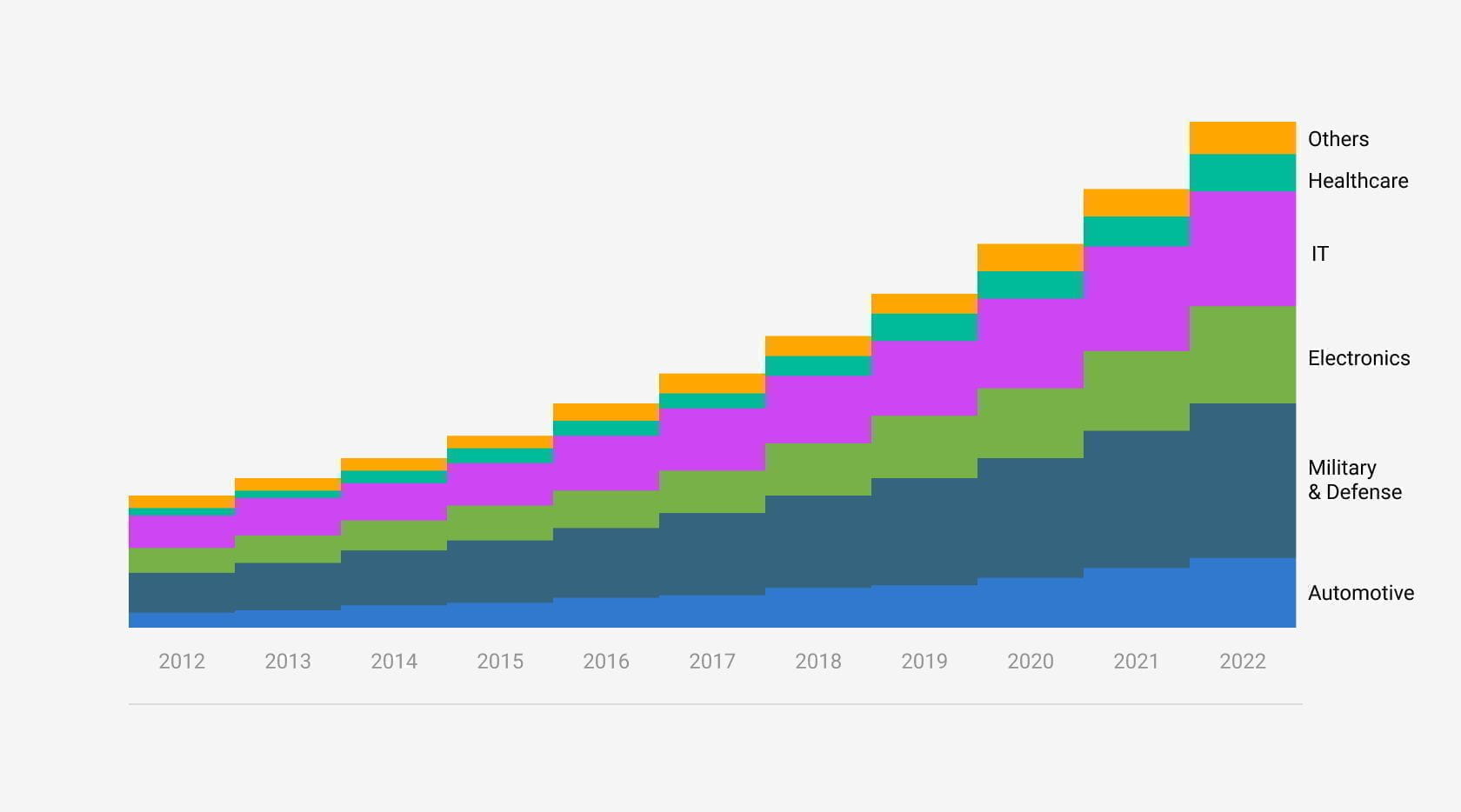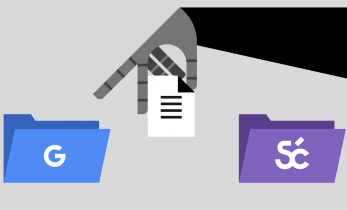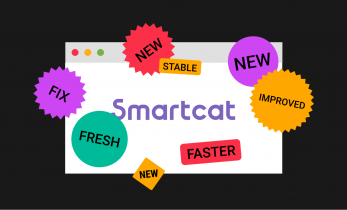Greater than 5 minutes, my friend!
Human and Machine Translation: Both Alive and Kicking — and Here to Stay
This month we’re partnering up with our friends from Smartcat to promote their all-in-one, intuitive, free-to-use translation platform.
You can signup for a free account right here.
Thank you for supporting The Open Mic and happy translating!
Hugs from Toronto!
~ Dmitry
Human and Machine Translation: Both Alive and Kicking — and Here to Stay
We all know that translation is an essential tool for communication between businesses. If you’re a global company and you’re not taking advantage of translation, you’re missing out on potential business. Basics, like offering your website in different languages or adapting your product to the nuances of each language and market, are a must if you want your international customers to feel truly looked after.
Most businesses are aware of this, but few know exactly how to go about getting their content translated. Can you use machine translation? Should you reach out to a human translator? Can you combine the two? These are all valid questions that we hope this article will resolve.
Machine translation — background, evolution, and types
So, let’s get down to basics. What’s the difference between a machine translation and a human translation? Well, machine translation is the instant transformation of text from one language to another using artificial intelligence. A human translation, on the other hand, involves real brainpower, in the form of one or more translators translating the text manually.
Machine translation has been around for over 60 years but has only recently started to be taken seriously, especially within the language industry. Now, businesses, LSPs, translation agencies, and freelance translators are starting to make use of machine translation to reduce costs and improve productivity.
There are a growing number of machine translation services available, many of which are free. Google Translate is the most well-known and perhaps the most infamous (who hasn’t come across a funny, awkward or completely inaccurate Google Translate translation?) Other machine translation services include Microsoft Translator, DeepL Translator, and Yandex.Translate.
Pro tip: Try and compare different MT engines in Smartcat
There are several types of machine translation: rule-based, statistical, adaptive, and neural, with most services moving towards the more successful adaptive or neural machine translation. Deep neural machine translation, in particular, is producing exceptionally good results and quickly bridging the gap between humans and machines for certain types of texts.
Machine translation vs. human translation
Few people disagree on the differences between the two, but many argue over the quality of the translations. How accurate are machine translations? How reliable are human translations? Some say machine translation produces near-perfect translations while others are adamant that translations are incomprehensible and cause more problems than they solve. Results will, of course, vary depending on the source and target languages, the machine translation service used (e.g. Google Translate), and the complexity of the original text.
Machine translation, love it or hate it, is here to stay. In fact, the machine translation market is growing at such a fast pace that it is predicted to reach $980 million by 2022.

Growth of machine translation worldwide. Source: Grand View Research
So where does that leave human translation? Doom-and-gloomers say machine translation will soon make professional translators redundant, while pragmatists understand that machine translation has its place, but dismiss the idea that human translation will no longer be necessary.
It’s clear that the quality of the translations produced by machine translation is improving at a fast pace. But while fluency improves, mistranslations still occur, so it’s still vital to have a human translator check and edit the machine translation. (Learn more about neural machine translation in general and false fluency in particular here.)
Additionally, there are many types of translation, like marketing texts, that involve rewriting or changing the message or content completely to make it work for the new audience; something that machine translation can’t yet do. In other words, we still need human intervention in all these scenarios, so translators worth their salt really have nothing to worry about.
If that’s the case, why does machine translation even exist? Why would we even use machine translations if human translations are undoubtedly better? Well, for one it’s significantly cheaper (no labor costs) and, on top of that, it’s instant. If you have a very limited budget and need to translate large amounts of text very quickly, you’re better off with a machine translation than a human translation.
Also, critics of machine translation often ignore that human translations can be a gamble if you don’t do your research beforehand. Human translators, at the end of the day, are human. Like in any other profession, there are good and bad translators. Whereas machine translation will always produce more or less similar results, human performance will depend on who you choose, their experience, their area of expertise, their availability, and their dedication, among other factors.
Pro tip: Find tested and vetted translators on Smartcat
But how good are machine translations? Can we use them as is? The short answer is no. Some machine translation services can get surprisingly close to the real thing but things still go wrong. We have yet to encounter a machine translation service that can produce flawless translations. If it did exist, human translation as a profession would be a thing of the past.
Why compare?
But perhaps we’re looking at it all wrong. Why one or the other? We’ve established that machine translation isn’t good enough on its own, but can you combine both machine translation and human translation? Sure. Some professional translators offer post-editing services which involve making changes to (or correcting) a previously machine-translated text. But if you do decide to take this route, do so with caution. While we can’t ignore that post-editing machine translation can seriously reduce your costs and turnaround time, most language professionals will tell you that 100% human translations are always better.
Using (post-edited) machine translation or human translation will very much depend on the purpose of your text. Are you in need of thousands of e-commerce descriptions translated into many languages within a tight budget and a limited time frame? In that case, post-editing machine translation (PEMT) might be the best option for you. Subtleties might be missed but the overall text will be comprehensible. Conversely, are you looking to translate your company’s landing page to attract new international customers? Then using PEMT would be counterproductive, as the text may need to be changed completely to create the same effect in each market. In this scenario, the best option is to go straight to human translators who know the local markets well and can adapt your text seamlessly.
What’s best for you?
Whatever you decide, finding the right professional translation service can be a struggle. Do you go to an LSP, a translation agency, or a freelance translator? And what should you look for in a translation service? Essentially, your final choice will depend on your particular needs and preferences but if your priority is quality, look for a service with experienced, human translators who are native in the target languages and, ideally, specialized in the subject areas. Ticking all the boxes will cost more and take longer but you will, without a doubt, end up with a high-quality translation that is infinitely better than anything produced using solely machine translation.
The future of machine translation
Fighting machine translation is a lost cause. Instead, we should focus on harnessing its power. If you’re a business, an LSP, a translation agency, or even a freelance translator, you can definitely benefit from incorporating machine translation into your workflow. What’s important is that you use it wisely, which means you should never use it as a standalone translation service. If you do decide to use machine translation, make sure you always get a human translator to polish the final text. Although far from perfect, machine translation is definitely a valuable tool that professional translators and businesses alike can take advantage of.
Source: Smartcat





Dear friends!